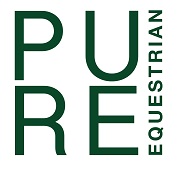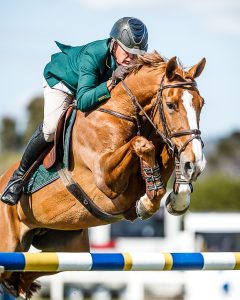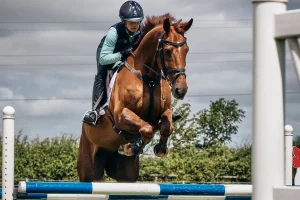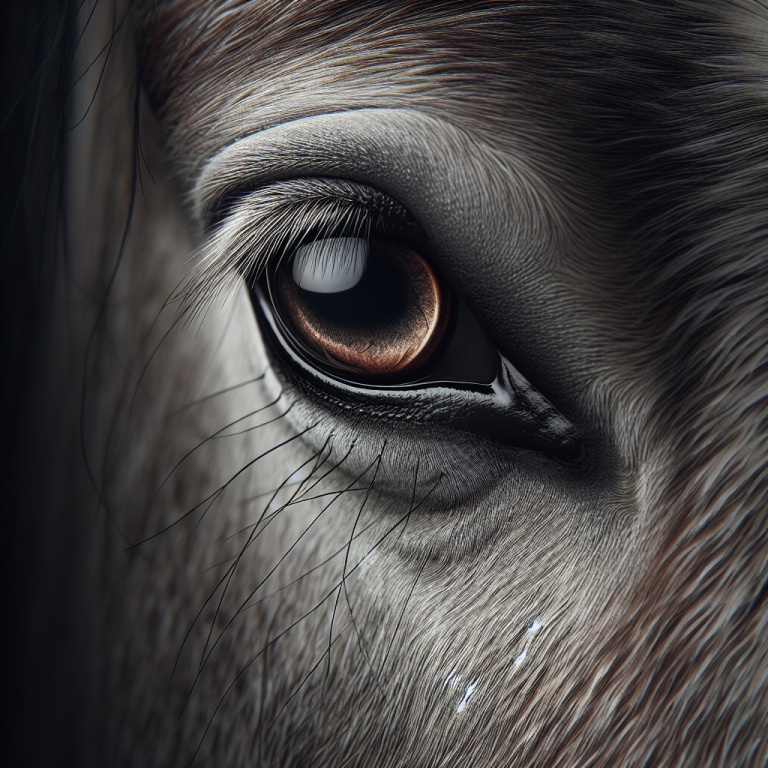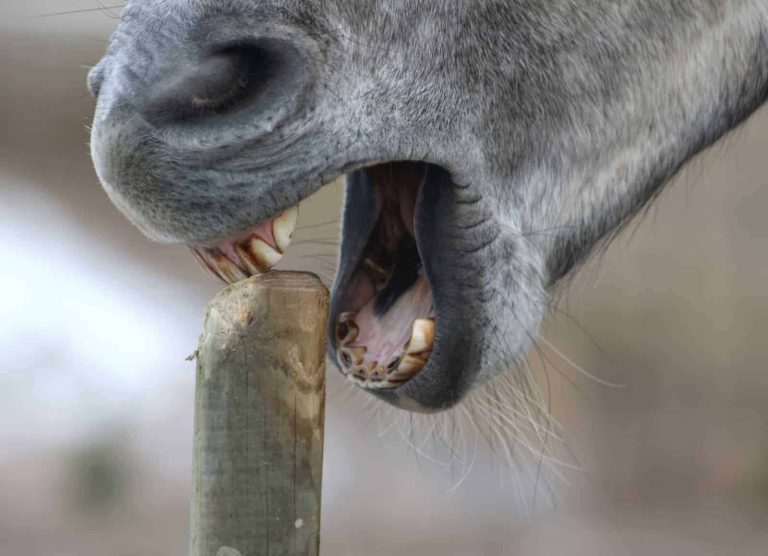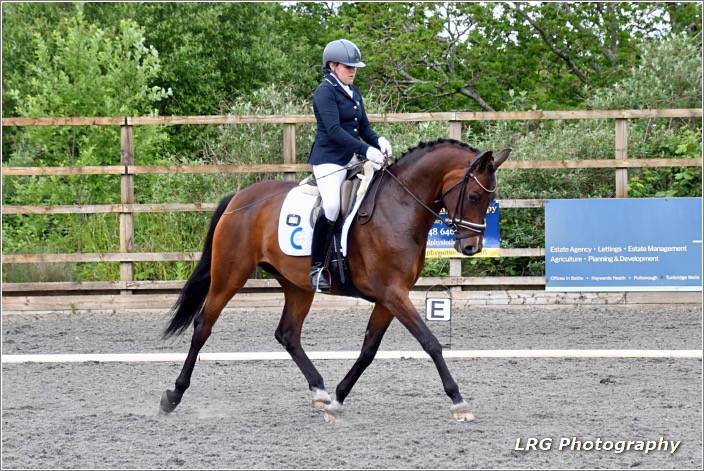Imagine yourself as a rider, eagerly anticipating a thrilling showjumping competition. As you enter the ring, the adrenaline courses through your veins, and you feel the weight of the crowd’s expectations. But have you ever wondered about the behind-the-scenes preparations that go into a successful performance? From training rigorous routines to fine-tuning their horse’s skills, riders devote countless hours to perfecting their craft. In this article, we will unveil the secrets of how riders prepare for a showjumping competition, giving you an exclusive insight into the world of these talented athletes. So grab your riding boots and saddle up, because we’re about to embark on an exhilarating journey into the heart of equestrian competition.
Table of Contents
TogglePhysical Preparation
Building Strength and Endurance
To excel in showjumping, it’s essential to have a strong and enduring body. Regular strength training exercises will help you build the necessary muscle strength to control your horse and maintain balance during jumps. Incorporate exercises like squats, lunges, and deadlifts to target your lower body muscles. Additionally, focus on exercises such as push-ups and tricep dips to strengthen your upper body. Remember to gradually increase the weight and intensity of your workouts to avoid injury and improve endurance.
Improving Flexibility and Balance
Flexibility and balance are crucial for maintaining the correct riding position and executing fluid movements during a showjumping competition. Include daily stretching routines to improve your flexibility. Focus on stretches that target your lower back, hips, and legs, as these areas are heavily engaged while riding. Yoga or Pilates can also help improve balance and core strength, which are vital for maintaining stability while jumping.
Practicing Core Stability Exercises
A strong core is the foundation for good riding posture and stability. Incorporate core stability exercises into your training routine to improve balance and control. Planks, Russian twists, and stability ball exercises are great for strengthening your core muscles. By developing a strong core, you’ll be able to absorb and adapt to the horse’s movements more effectively, ensuring a more harmonious partnership between you and your horse.
Maintaining Fitness through Cardiovascular Training
Showjumping requires both explosive power and endurance. Engaging in regular cardiovascular training will help boost your stamina and overall fitness level. Activities such as running, cycling, or swimming are great ways to improve cardiovascular endurance. Aim for at least 30 minutes of cardio exercise three to four times a week to enhance your ability to maintain energy and focus throughout a competition.
Mental Preparation
Setting Goals and Visualising Success
Setting clear and achievable goals helps provide direction and motivation in your showjumping journey. Before each competition, establish specific objectives for yourself and visualise yourself successfully achieving them. Visualising success creates a positive mindset and boosts confidence, enabling you to perform at your best.
Developing Mental Toughness
Showjumping can be mentally challenging, as riders often face pressure and unexpected situations in the arena. It’s crucial to develop mental toughness to stay focused and resilient. Implement techniques such as positive self-talk, reframing negative thoughts, and staying present in the moment. Practice mindfulness and meditation to enhance mental clarity and calmness, allowing you to stay composed even in high-pressure situations.
Managing Competition Anxiety
Competition anxiety is common among riders and can negatively impact performance. To combat anxiety, establish pre-competition routines and rituals that help you relax and stay focused. Deep breathing exercises, visualisation, and maintaining a positive mindset are useful tools for managing anxiety. Additionally, seeking support from friends, family, and coaches can provide reassurance and help alleviate anxiety.
Practicing Concentration and Focus
Maintaining concentration and focus during a showjumping competition is essential for executing precise movements and making split-second decisions. Practice concentration exercises such as focusing on a specific object or setting small, achievable goals during training sessions. Minimise distractions and train your mind to stay present and fully engaged with your horse’s movements.
Technical Training
Working with a Coach
Engaging the expertise of a skilled coach is invaluable for improving your showjumping skills. A coach can provide guidance, offer constructive feedback, and help you refine your technique. Work closely with your coach to develop a personalised training plan tailored to your specific strengths and areas for improvement. Regular lessons and training sessions will help you refine your riding skills and address any technical shortcomings.
Perfecting Riding Position and Balance
Having a correct and balanced riding position is essential for effective communication with your horse. Practice proper alignment, with your heels, hips, and shoulders in line. Work on maintaining a relaxed yet firm leg position and a supple upper body to allow your horse to move freely. Regularly practicing your riding position on the flat and over ground poles will help you achieve a more balanced and effective posture.
Improving Jumping Technique
Improving your jumping technique is at the core of showjumping training. Focus on exercises that help you establish a solid base over jumps, such as grids and gymnastic exercises. Work on maintaining light and elastic contact with your horse’s mouth and a steady rhythm while approaching and landing from jumps. Regularly practicing jumping exercises will help you refine your technique and improve your overall performance.
Practicing Course Navigation
Navigating a showjumping course with precision requires practice and familiarity. Set up courses at home or in your training facility and practice riding different combinations and lines. Pay attention to the distances between jumps and work on your timing to achieve a smooth and efficient ride. By practicing course navigation regularly, you’ll develop a better understanding of how to approach each jump and optimise your performance.
Training on Different Types of Jumps
Showjumping courses often feature a variety of jumps, including verticals, oxers, combinations, and even water or liverpool obstacles. Training on different types of jumps will help you gain confidence and adaptability. Gradually introduce your horse to different jump types, starting with lower heights and gradually increasing the difficulty. This exposure will build trust between you and your horse and prepare you for the challenges you may encounter in a competition.
Horse Conditioning
Planning a Training Programme
Just like riders, horses require proper conditioning to perform at their best in showjumping competitions. Create a training programme that includes a mix of flatwork, jumping exercises, and rest days to ensure your horse’s physical and mental well-being. Consult with your veterinarian and trainer to develop a programme that aligns with your horse’s capabilities and individual needs.
Building the Horse’s Fitness
Gradually build your horse’s fitness levels through progressive training. Incorporate regular hacking, hill work, and interval training sessions to improve cardiovascular endurance and muscle strength. Vary the types of exercises to engage different muscle groups and prevent boredom. Remember to monitor your horse’s response to training and adjust the intensity and duration accordingly to avoid overexertion.
Developing Strength and Stamina
In addition to maintaining cardiovascular fitness, it’s important to develop your horse’s strength and stamina. Incorporate exercises such as pole work, cavaletti, and gridwork to improve your horse’s hind end engagement and jumping technique. Gradually increase the height and technicality of jumps as your horse progresses, ensuring they are physically prepared for the demands of a showjumping course.
Maintaining Soundness through Proper Care
Keeping your horse sound and healthy is essential for their performance and well-being. Implement a thorough care routine that includes daily grooming, regular farrier visits, and routine veterinary check-ups. Monitor your horse’s body condition, hydration levels, and overall health to identify and address any issues promptly. Proper nutrition, appropriate turnout, and a consistent routine contribute to your horse’s overall soundness and performance.
Equine Nutrition and Diet
A well-balanced diet is crucial for supporting your horse’s energy levels, muscle development, and overall health. Consult with a qualified equine nutritionist to formulate a diet that meets your horse’s specific needs. Focus on high-quality forage, and supplement with grain, if necessary, to ensure your horse receives the proper nutrients. Regularly assess your horse’s weight and adjust the diet as needed to maintain optimal condition.
Course Familiarisation
Walk the Course
Before competing, it’s essential to familiarise yourself with the showjumping course. Walk the course, paying attention to the set distances, technical elements, and challenges posed by each jump. Take note of any potential difficulties or specific riding lines. Understanding the course layout will allow you to develop strategies for each jump and effectively plan your ride.
Study the Course Map
Alongside walking the course, study the course map provided by the competition organisers. Pay attention to the jump numbers, riding directions, and any special instructions or rules. Visualise yourself riding the course, mentally noting the approaches and options for each jump. Studying the course map will help you establish a solid mental image of the course, enhancing your confidence and performance.
Analyze the Course Challenges
Identify the challenges presented by the course and analyse how you can effectively navigate them. Take note of any technical elements, combinations, or related distances that require specific riding skills. Determine potential solutions and mentally rehearse different scenarios to develop a flexible and adaptable strategy for each challenge.
Develop a Strategy for Each Jump
After analysing the course challenges, develop a strategy for each jump. Consider the best approach, the desired riding line, and the required pace. Evaluate factors such as your horse’s strengths, jumping style, and adjustability to determine the optimal riding plan. By having a well-thought-out strategy for each jump, you can make informed decisions during the competition and maximise your chances of success.
Practice Jumping Similar Courses
To further enhance your course familiarity and improve your riding skills, practice jumping similar courses in your training sessions. Set up exercises that mimic the technical elements or challenge specific aspects of the showjumping course. By training over similar jumps and combinations, you’ll develop the muscle memory and confidence necessary to effectively execute the course challenges during a competition.
Equipment and Tack Preparation
Inspecting and Cleaning Tack
Before a showjumping competition, thoroughly inspect all your tack for any signs of damage or wear. Check the stitching, buckles, and straps to ensure they are in good condition. Clean your tack regularly using suitable leather products to maintain durability and suppleness. Taking the time to inspect and clean your tack ensures your horse’s comfort and safety during the competition.
Check and Adjust the Horse’s Bridle and Bit
The bridle and bit play a crucial role in communicating with your horse during a showjumping competition. Before each competition, check that the bridle fits properly and that the bit is suitable for your horse’s needs and comfort. Ensure the bit is correctly adjusted and situated at the proper height and position within your horse’s mouth. Pay attention to any signs of discomfort or resistance from your horse and make the necessary adjustments or consider alternative options.
Ensure Proper Saddling and Girth Tightness
Proper saddling and girth tightness are vital to prevent discomfort and ensure a secure fit while jumping. Before a showjumping competition, double-check that the saddle is correctly positioned and tightened adequately. Check the girth tightness, ensuring it is snug but not overly tight, to provide stability without restricting the horse’s movement. Regularly recheck the girth tightness throughout the day, as sweat and movement can cause it to loosen.
Prepare Backup Equipment
Having backup equipment readily available is essential for ensuring you can quickly address any unexpected equipment failures or emergencies. Pack spare reins, stirrup leathers, girths, and any other necessary equipment. Consider bringing an extra bridle and bit in case of timely repairs or replacements. By being well-prepared with backup equipment, you can swiftly resolve any issues and minimise disruptions to your competition.
Organize Gear and Supplies
Keeping your gear and supplies organised is key to staying focused and efficient during a showjumping competition. Have a designated bag or storage container for your riding gear, including gloves, spurs, number bibs, and grooming supplies. Ensure everything is easily accessible and packed appropriately for transportation. By maintaining an organised system, you can efficiently access and manage your equipment, reducing pre-competition stress and allowing you to focus on your performance.
Warm-up Exercises
Walk and Trot Exercises
Begin your warm-up routine with light walking and trotting exercises. These low-impact movements help loosen your horse’s muscles and joints, preparing them for more intense physical activity. Encourage your horse to stretch down while walking to promote relaxation and suppleness. In the trot, focus on maintaining a steady rhythm and encouraging a balanced and forward stride.
Stretching and Flexion Exercises
Incorporate stretching and flexion exercises into your warm-up routine to improve your horse’s flexibility and suppleness. Perform gentle neck stretches, lateral flexions, and leg stretches to encourage your horse to bend and stretch their muscles. These exercises promote relaxation, enhance range of motion, and prepare your horse for the physical demands of jumping.
Lateral Movements
Introducing lateral movements, such as leg yields and shoulder-in, during your warm-up routine can improve your horse’s responsiveness and engagement. Incorporate these movements at a walk and trot to encourage your horse to laterally shift their weight, engage their hindquarters, and become more receptive to your aids. Lateral movements also help warm up specific muscle groups required for jumping.
Jumping Cross Rails
As you progress through your warm-up, introduce small cross rails to help your horse focus on the task ahead and develop their jumping technique. Start with low, inviting fences to build confidence and gradually increase the height as your horse becomes more warmed up and engaged. Maintain a relaxed and balanced position, allowing your horse to find their stride and establish a rhythmic approach to the jumps.
Progressing to Higher Jumps
Once your horse is comfortably jumping cross rails, progressively increase the height and technicality of the jumps during your warm-up. Set up verticals, oxers, and combinations to simulate the challenges you’ll encounter in the competition arena. Focus on maintaining a consistent rhythm, allowing your horse to find the appropriate take-off points confidently. Gradually raising the height will help your horse adequately warm up their muscles and prepare for the competition.
Pre-Competition Routine
Establish a Consistent Routine
Creating a consistent pre-competition routine helps you and your horse feel comfortable and prepared for the showjumping competition. Establish a specific sequence of activities that you perform before every competition, such as grooming, tacking up, and warming up. By following a routine, you establish a sense of familiarity and routine that contributes to a calm and confident mindset.
Arrive Early to the Venue
Plan to arrive at the competition venue with ample time to settle in and mentally prepare. Arriving early provides you with the opportunity to familiarise yourself with the surroundings, walk the course, and visualise your performance. It also allows your horse to acclimatise to the new environment, reducing any potential stress or anxiety.
Prepare the Horse’s Stall or Trailer
If your horse is stabled at the competition venue, prepare their stall with clean bedding, water, and hay to ensure their comfort and well-being. Ensure that the stall is safe and secure, with no sharp objects or potential hazards. If you’re using a trailer, ensure it is clean, well-ventilated, and properly equipped to transport your horse comfortably.
Feed and Hydrate the Horse Appropriately
Provide your horse with a suitable pre-competition meal, ensuring it aligns with their usual feeding routine. Feed a balanced combination of forage and concentrate, taking care not to overload the digestive system close to the competition. Monitor hydration levels and provide access to clean water at all times.
Warm-up Exercises Before Entering the Arena
Before entering the competition arena, incorporate a brief warm-up session to activate your horse’s muscles and establish a mental focus. Perform a combination of stretching exercises, lateral movements, and jumping exercises to prepare your horse physically and mentally for the upcoming competition. Allow enough time for your horse to cool down and walk before entering the arena to maintain relaxation and focus.
Nerves Management
Deep Breathing and Relaxation Techniques
When experiencing nerves before a showjumping competition, deep breathing and relaxation techniques can be effective in reducing anxiety and promoting a calm state of mind. Take slow, deep breaths to oxygenate your body and relax your muscles. Incorporate relaxation techniques, such as progressive muscle relaxation or guided imagery, to help calm your mind and ease nerves.
Positive Self-Talk and confidence-boosting
Positive self-talk is essential for managing nerves and boosting confidence. Replace negative thoughts and doubts with positive affirmations and realistic self-assurances. Remind yourself of past successes, focus on your strengths, and maintain a positive mindset. Visualise yourself riding confidently and successfully, reinforcing your belief in your abilities.
Visualising Success and Positive Outcomes
Visualisation is a powerful tool for enhancing performance and calming nerves. Take the time to mentally rehearse your showjumping rounds, imagining yourself riding each jump with precision and confidence. Visualise the feeling of success and the positive outcomes you desire. By consistently visualising success, you programme your mind for a confident and focused performance.
Engaging in Stress-Reducing Activities
Engaging in stress-reducing activities can help alleviate pre-competition nerves. Find activities that relax and distract you, such as listening to calming music, reading a book, or engaging in light exercise. Take breaks between warm-up and competitions to engage in activities that help you maintain a relaxed state of mind.
Seeking Support from Friends, Family, and Coaches
During times of nervousness, seeking support from friends, family, and coaches can provide reassurance and help you overcome anxiety. Surround yourself with a supportive network of individuals who understand and encourage your showjumping journey. Talk to them about your concerns, gather their insights, and feed off their positivity. Having a strong support system can go a long way in managing nerves and boosting your confidence.
Competition Day Strategies
Staying Focused and Trusting Training
On competition day, it’s crucial to stay focused and trust in your training. Remember that you have put in hours of practice and preparation. Trust in your abilities and the training you’ve received from your coach. Maintain a positive mindset and stay present in the moment, focusing on each jump and executing your strategy to the best of your ability.
Analysing the Course and Making Adjustments
As you enter the competition arena, quickly analyse the course and make any necessary adjustments to your pre-planned strategy. Take note of any changes in the track or specific challenges that may require a different approach. Stay flexible and adapt to the course as needed, confident in your ability to problem-solve and make split-second decisions.
Maintaining a Consistent Riding Style
Consistency in your riding style is key to effectively communicating with your horse and achieving a harmonious ride. Focus on maintaining a steady rhythm, a balanced seat, and clear aids. Doing so will provide your horse with confidence and clarity, allowing them to perform at their best. Trust in the riding style you’ve developed through practice, and let it guide you through the competition.
Pacing and Managing Energy Levels
Pacing yourself and managing both your and your horse’s energy levels throughout the competition is crucial for consistent performance. Stay mindful of any unnecessary exertion or excitement that may drain your energy prematurely. Use your warm-up observations and knowledge of your horse’s fitness levels to adjust your pace accordingly. Maintain a balanced approach, conserving energy without sacrificing accuracy or technique.
Staying Calm and Responding to Unexpected Situations
During a showjumping competition, unexpected situations may arise, such as refusals, knockdowns, or deviations from your planned strategy. Stay calm and composed, responding to these occurrences in a level-headed manner. Quickly assess the situation, adjust your strategy if necessary, and refocus on the next jump. By maintaining a calm demeanour, you can adapt to unexpected circumstances efficiently and maintain your overall performance.
